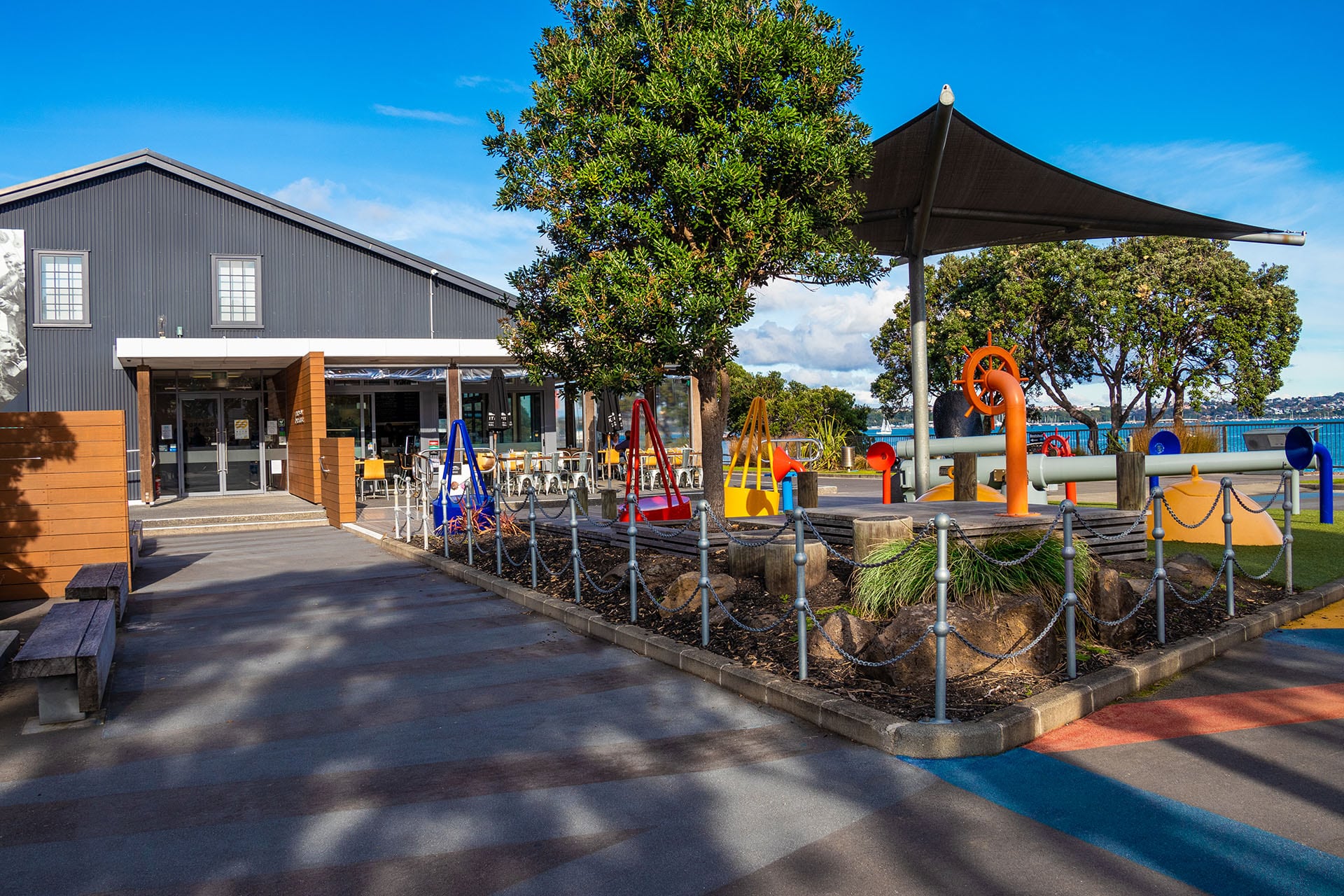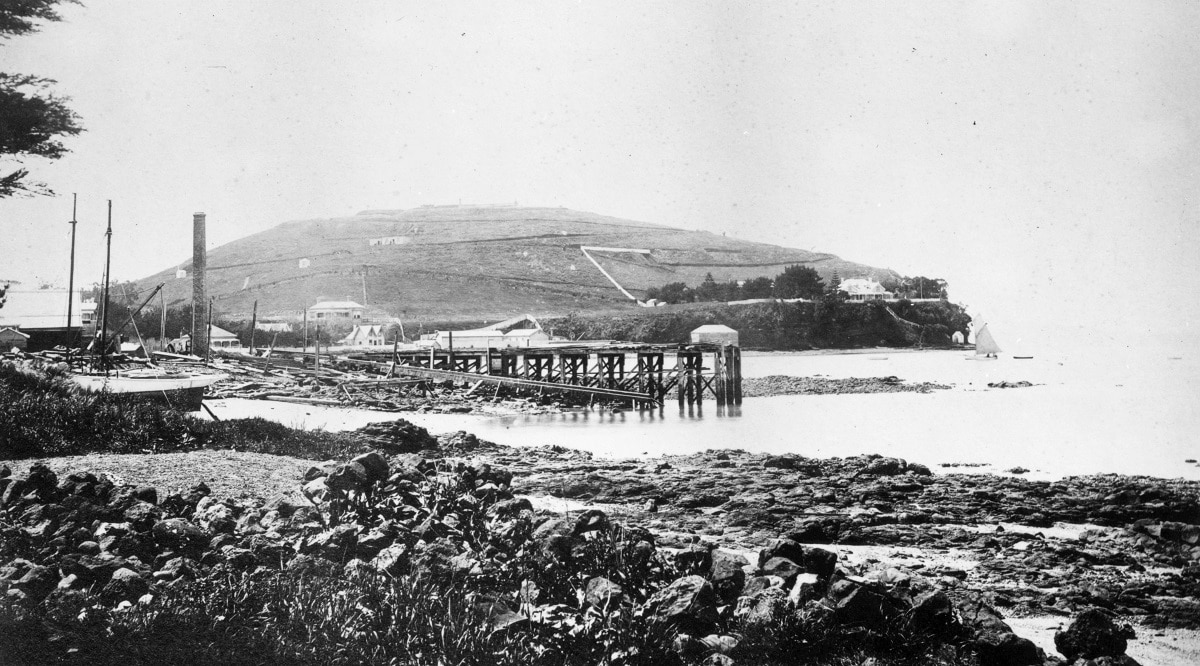As you take in the sweeping vistas from the summit, you’ll understand why the location was perfect for a nineteenth century fort.
The views go off in all directions, taking in the inner and outer harbours (the volcanic island of Rangitoto feels like it’s in your lap), Auckland city, the North Shore and beyond.
The fort’s designers carefully sited heavy artillery of various calibers on the hill’s grassy slopes to cover every point of the harbour. These included three “disappearing guns” which, at the time of their installation in 1886, were considered the most up-to-date weapons of their type.
The idea was that when fired, the recoil of the gun would push it underground, where it could be safely reloaded out of sight from anyone who wanted to shoot back.
You can still see the “disappearing gun” that formed part of the South Battery (which covered the inner harbour) and explore the deep chamber that it disappeared into.
A number of the other big guns remain too, their barrels still pointing menacingly out to sea. To challenge an invader that ultimately never came.
Tsarist Russia collapsed in the early twentieth century and feared invasions from the Germans and Japanese in the two World Wars never materialised.
The guns never fired a shot in anger. Time and improvements in technology passed them by. As ship’s guns became mightier and able to fire shells across miles rather than metres, it was deemed that the fort at North Head was simply too close to the city it was meant to defend.
New batteries were built at Mototapu, Castor Bay, Whangaparoa and Waiheke Island and Maungauika/North Head was relegated to the role of an administration centre.
Some guns were removed. Others replaced. And while the ones that remain will never blast any battleships out of the water, they certainly help to bring our history to life (and make a dramatic backdrop for a photo opp).
And then there are the tunnels…






